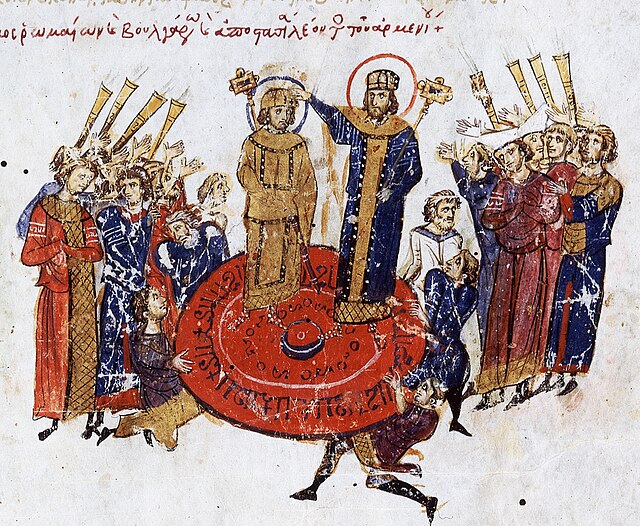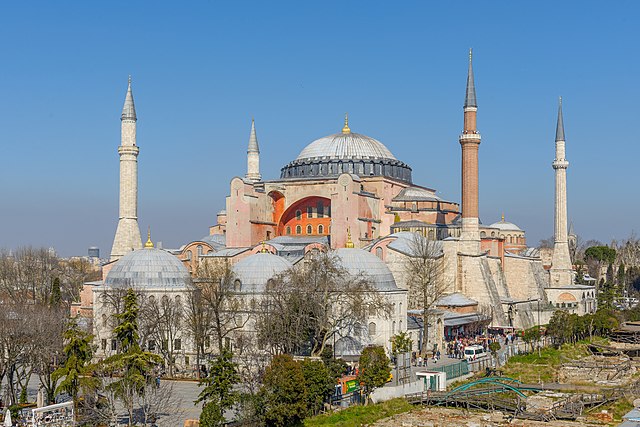Coronation of the Byzantine emperor
The coronation was the main symbolic act of accession to the throne of a Byzantine emperor, co-emperor, or empress. Founded on Roman traditions of election by the Senate or acclamation by the army, the ceremony evolved over time from a relatively simple, ad hoc affair to a complex ritual.
Mosaic of Emperor Justinian I in coronation dress, Basilica of San Vitale, Ravenna
Anachronistic depiction of a coronation by being raised on a shield, from the Madrid Skylitzes. The crowned figure is meant to be Michael I Rhangabe, although there is some debate concerning the identity of the two figures, as the scene appears to be drawn from a lost original source. It has been proposed that the image depicts the coronation of a co-emperor (left) by a senior emperor (right).
The coronation of the young Constantine VII Porphyrogennetos as Byzantine co-emperor in 908. Miniature from the Madrid Skylitzes chronicle. c. 12th–13th century
The Hagia Sophia cathedral in Constantinople (modern Istanbul) was the main coronation church of the Byzantine emperors, from the mid-7th century to the end of the Empire
Leo I, also known as "the Thracian", was Roman emperor of the East from 457 to 474. He was a native of Dacia Aureliana near historic Thrace. He is sometimes surnamed with the epithet "the Great", probably to distinguish him from his young grandson and co-augustus Leo II.
Possible alabaster head of Leo on a modern bust
16th cent. Russian icon depicting St. Leo's enshrinement of the Robe of the Theotokos in Sts. Peter and Mark church, Blachernae






